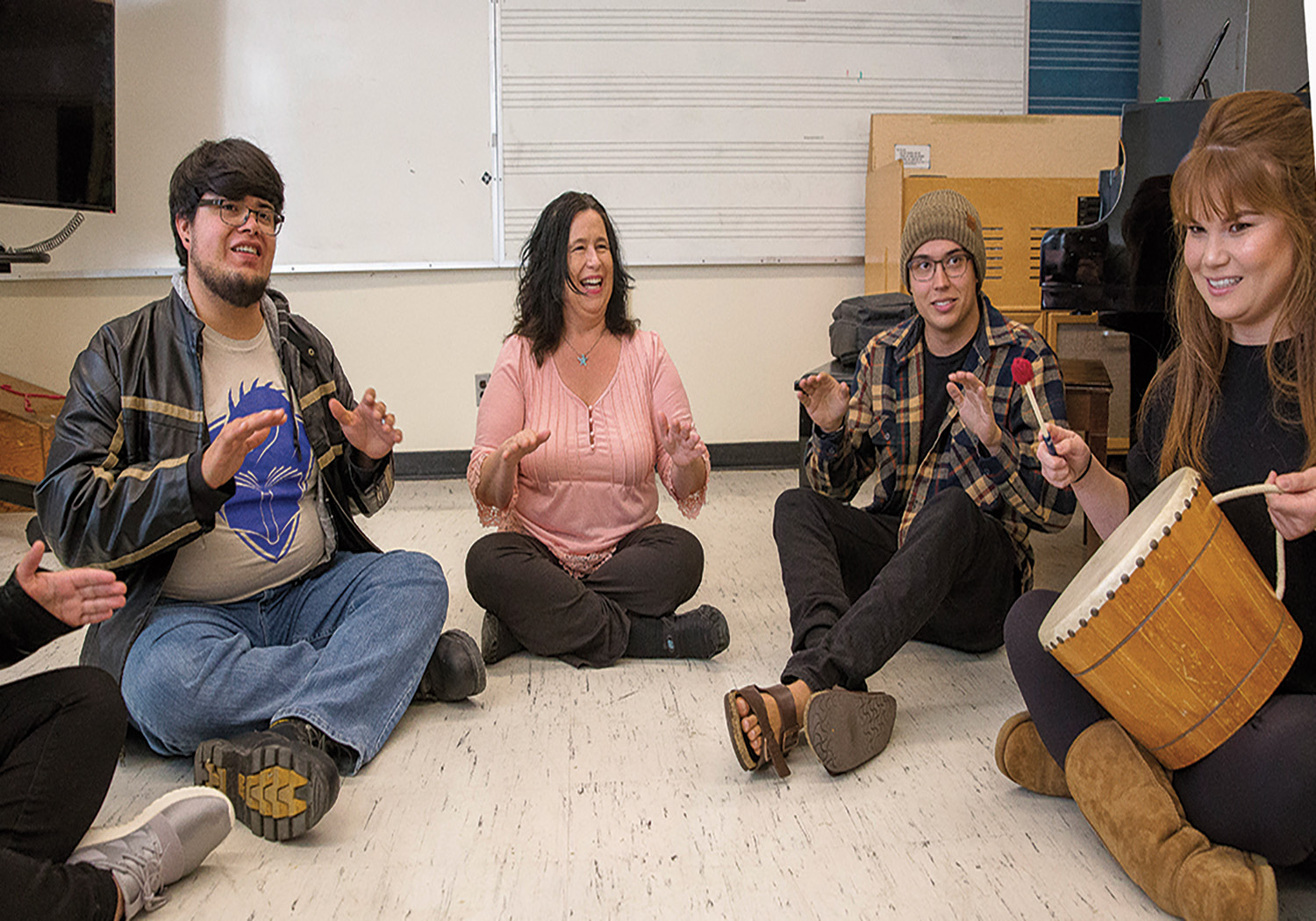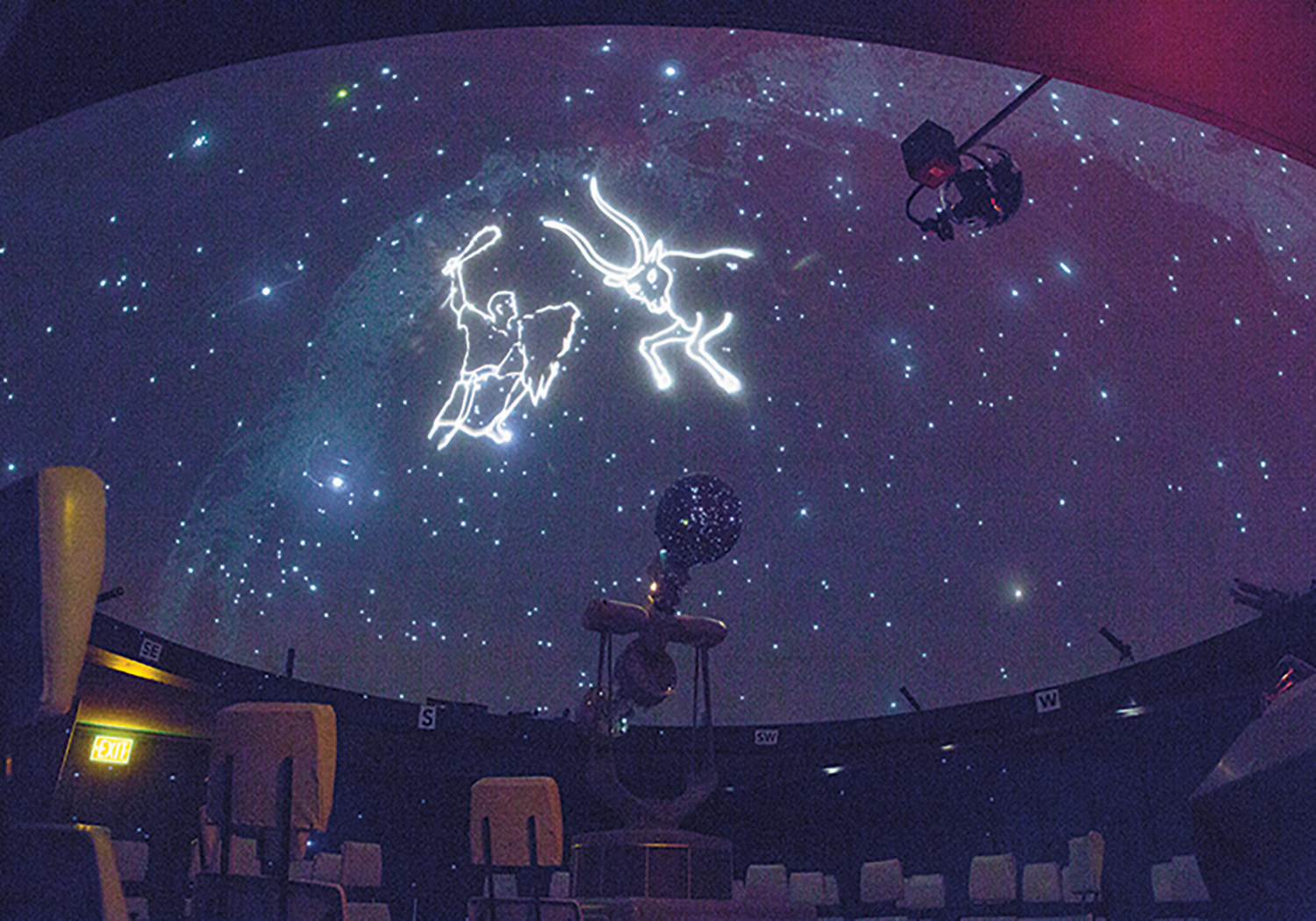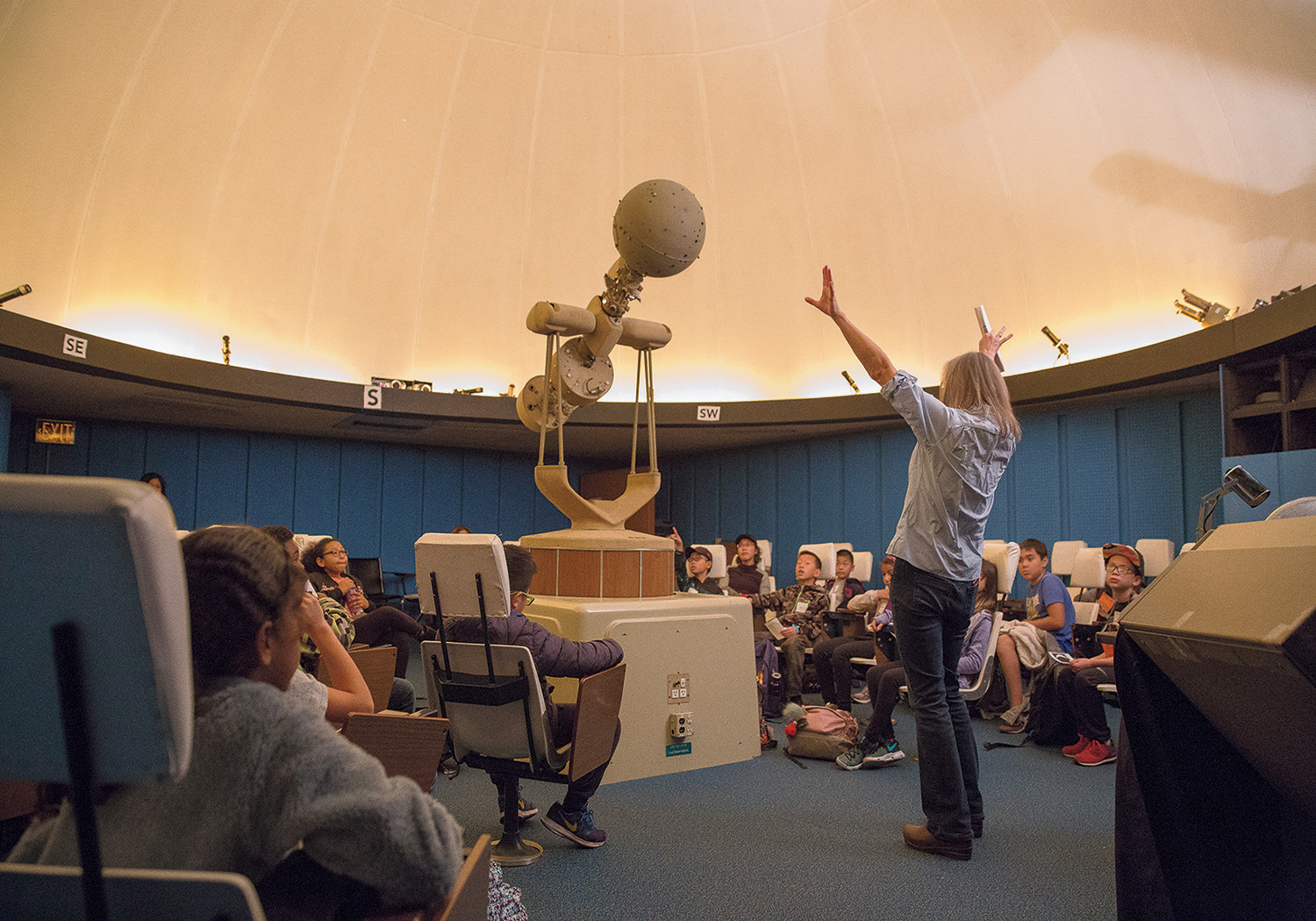A Class of Their Own

Student Benjamin Feldman leads his Chomsky class.
When SF State student Benjamin Feldman complained to Political Science Lecturer Kathy Emery that he wasn’t learning about linguist and political activist Noam Chomsky in any of his political science classes, she had a response you won’t hear at most universities: “Why don’t you teach a class on Chomsky?”
So he did: Feldman began teaching “Limiting Democracy, a Study of Noam Chomsky” last fall. The class was part of a revival of the Experimental College, a student-led college that uses a progressive, student-centered teaching approach. Student teachers choose the subject, design the curriculum, recruit students and can earn up to four units for their efforts. According to Emery, one of the program’s advisers, students like that they control the pace of the class as well as the subject matter, so they’re learning material that’s relevant to their lives.
If it sounds like something out of the 1960s, that’s because it is: The original Experimental College started in 1965 as an outgrowth of various counterculture and activist movements at SF State and colleges throughout the U.S. Courses offered at what was then San Francisco State College weren’t addressing the issues students were facing in their communities, so they took action.
“A group of progressive students, many with experience organizing in the Civil Rights Movement and inspired by Berkeley’s Free Speech Movement, took over the student government in the spring of 1964 and launched the Experimental College in the fall of 1965,” Emery says. “They took the name from University of Wisconsin’s Experimental College in the 1920s and ’30s. The courses offered from 1965 to 1968 reflected the concerns of these progressive students, which included black, La Raza and Asian studies.”
Students in Emery’s class “The Politics of Pedagogy” study archives from the original Experimental College. And that’s where student interest in resurrecting the program grew. She got in touch with Professor Trevor Getz, chair of the Department of History, and Associate Professor of Sociology Chris Bettinger to develop a pilot proposal to restart the program. The Division of Undergraduate Education and Academic Planning reviewed it and approved the pilot. After making its return in the fall, the Experimental College offered a whole new slate of classes this spring, including “Cultural Warfare 101: Hip-Hop’s Role in Revolution in the 21st Century,” “Curiosity, Creativity and the Human Brain” and “A History of Activism in Sports: From Jackie Robinson to Colin Kaepernick.”
Old Songs, New Solutions

Professor Hanna (center) with students
Late last year, SF State faculty member Wendell Hanna was one of five California State University (CSU) faculty members to receive a seed grant from the Gary and Mary West Foundation to advance palliative care research. But Hanna’s specialty isn’t nursing or medicine. She’s a professor of music education who’ll be using the funds to develop a music and movement therapy program for patients in hospice care.
“Music is so important for people who are suffering or in pain,” Hanna says. “You can only do so much about physical pain, but there’s also emotional pain and spiritual pain. Music can really help with that.”
Hanna’s project is part of the Institute for Palliative Care, a CSU-wide effort to ensure that California is meeting the medical needs of its aging population. The project explores the benefits of combining music with soothing exercises for people in hospice care. Because the music has to resonate with the patients, Hanna paired music from the 1950s — mostly torch songs and ballads — with the exercises.
The next step in the project is training caregivers at local VITAS Healthcare centers, part of a nationwide hospice and palliative care network. Hanna plans to follow up with interviews to determine how patients benefitted from the treatment. She will present her findings at the next CSU Palliative Care Symposium in October.
A Room with a View
Jim Gibson stands at a control panel steering the stars with rows of glowing switches while above him looms a 26-foot-tall starlit dome. It wouldn’t look out of place in a vintage sci-fi film. Yet it’s all tucked away in Thornton Hall behind a door that looks like the entry to any other classroom.
SF State’s planetarium is easy to miss if you don’t know it’s there. But for more than four decades, it’s been a launchpad for careers in astronomy and science education and a catalyst for learning about space.
“This is far and away the best teaching tool I’ve ever encountered,” says Gibson, an SF State astronomy technician.
For those four decades, the planetarium has remained basically unchanged — including its centerpiece, the projector that displays pinpricks of light on the dome to represent the stars. “It was state-of-the-art in 1973,” says Professor of Physics and Astronomy Adrienne Cool, who runs the planetarium, “but it’s showing its age.”
That’s why the University is raising $1.5 million for a new one. “A new projector will bring us into the 21st century, put more modern tools at educators’ fingertips and, with luck, last another 40 years,” Cool says.
The Charles F. Hagar Planetarium has stood in 422 Thornton Hall ever since the building was erected in 1973. Hagar, an astronomy professor at SF State for 35 years, designed the space. He envisioned it as a place where anyone could come to learn astronomy. Today the space is home to astronomy lab classes as well as free public showings and lessons for local public schools — a service that’s unique in the Bay Area — serving thousands of community members each year.
Even with decades-old equipment, an instructor can manipulate time and space to explain difficult astronomy. One of Gibson’s shows walks the audience through a fierce disagreement among 16th century astronomers: Is the Earth moving within the universe, or do the stars and planets move around the Earth? “If I had stood up in a classroom and tried to interest people in that, forget it,” Gibson explains. “But here, every step of the lesson relates to things they could see every night.”
Other lessons teach students about the Earth’s tilt and the seasons or the constellations of the night sky. “That’s the astronomy that I feel people will take away from this and pass on to their kids and parents and neighbors,” says Cool.
The planetarium lets students learn how to craft their own shows, too. Vivian White, the director of free choice learning at the Astronomical Society of the Pacific, got her start in astronomy education by giving shows in the planetarium as an undergraduate. “My biggest love is for the night sky, thanks to that planetarium,” she says. Other alumni can be found in science museums, astronomy outreach organizations and other planetariums around the country.
On top of everything else, the planetarium provides a break from the sometimes hectic pace of city life. Every other Friday at noon, Gibson puts on a public show where the room is home to something akin to a meditation session. “I don’t talk,” he explains. “I just turn on the stars and let them drift across the sky.”

Professor Cool (right) introduces young visitors to the planetarium and the constellations.
